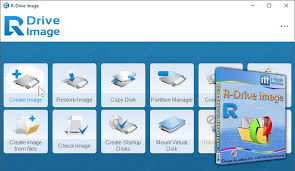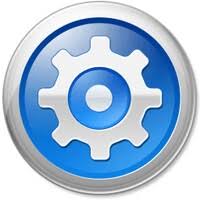R-Tools R-Drive Image 7.3.7301 + BootCD Download
R-Drive Image is a highly efficient disk imaging and backup software developed by R-Tools Technology. It is designed to create exact byte-to-byte copies of hard drives, SSDs, partitions, or logical disks, allowing users to back up important data, restore systems after crashes, or migrate to new storage devices. The latest version, R-Drive Image 7.3.7301, comes with various performance enhancements, improved backup algorithms, and an updated BootCD for recovery in critical situations.
Key Features of R-Drive Image 7.3.7301
1. Powerful Disk Imaging and Cloning
- Creates exact sector-by-sector or file-by-file copies of disks and partitions.
- Supports incremental and differential backups for efficient storage use.
- Enables direct cloning of disks from one drive to another.
2. Advanced Backup Capabilities
- Supports hot imaging, meaning backups can be created while the system is running without disrupting work.
- Uses VSS (Volume Shadow Copy Service) to ensure a consistent backup state.
- Allows compression to save storage space and encryption to secure sensitive data.
- Can schedule automatic backups at predefined intervals.
3. BootCD for Disaster Recovery
- Provides a bootable recovery environment for restoring images when the primary system is unbootable.
- Supports both Legacy BIOS and UEFI boot modes.
- Allows users to restore images to a new hard drive, SSD, or RAID configuration.
4. User-Friendly Interface
- Step-by-step wizard-driven UI for easy operation.
- Offers both a graphical interface (GUI) and command-line (CLI) options for advanced users.
- Supports drag-and-drop operations for quick backup selection.
5. Compatibility with Various Storage Technologies
- Works with HDDs, SSDs, USB drives, NAS, and cloud storage.
- Supports MBR and GPT partition tables.
- Fully compatible with file systems like NTFS, FAT32, exFAT, ReFS, HFS+, APFS, and Ext2/3/4.
- Recognizes dynamic disks, RAID arrays, and virtual disk images (VHD, VHDX, VMDK).
6. Smart and Secure Data Protection
- Ensures backup integrity with error-checking mechanisms.
- Allows for the splitting of large backup files to fit on smaller storage media.
- Offers a write-protection feature to prevent accidental overwriting.
7. Efficient Performance Enhancements
- Optimized for faster read/write speeds during backup and restore operations.
- Uses advanced compression algorithms to reduce backup sizes without losing quality.
- Supports multi-threaded processing for improved performance on multi-core CPUs.
What’s New in R-Drive Image 7.3.7301?
The latest version includes several improvements and bug fixes to enhance user experience and reliability.
Enhancements:
Improved backup performance: Faster imaging and recovery processes.
Updated BootCD: Better hardware support and improved system recovery options.
Enhanced compression: Further reduces backup sizes while maintaining speed.
Security updates: Strengthened encryption and data integrity checks.
Improved UI: More intuitive navigation and clearer error messages.
Installation Guide
Download R-Drive Image 7.3.7301
Visit the official R-Tools website and download the latest version.
Run the Installer
Double-click the installer file and follow the on-screen instructions.
Choose Installation Type
Select either a typical installation (recommended for most users) or a custom setup for advanced configurations.
Complete Installation
Click Finish once the installation process is complete.
Create a BootCD (Optional but Recommended)
Open R-Drive Image, go to the Boot Media Creator, and generate a BootCD on a USB drive or CD/DVD.
How to Use R-Drive Image 7.3.7301

Creating a Disk Image (Backup Process)
- Launch R-Drive Image and select “Create an Image”.
- Select the Source Disk or Partition you want to back up.
- Choose the Destination Location (external drive, NAS, or cloud storage).
- Set Backup Options:
- Enable compression for space-saving.
- Enable encryption for data security.
- Choose full, incremental, or differential backup.
- Click “Start” and wait for the process to complete.
Restoring a Disk Image (Recovery Process)
- Boot the system using the R-Drive Image BootCD (if the OS is unbootable).
- Select “Restore Image” from the menu.
- Locate the Backup File on the storage device.
- Select the Destination Drive where the image will be restored.
- Confirm and Start the Process.
- Once completed, restart the system and check for successful recovery.
Use Cases for R-Drive Image
Personal Data Backup – Protect important files, documents, and photos.
System Migration – Move an OS from HDD to SSD or new hardware.
Disaster Recovery – Restore a system after a malware attack or hardware failure.
Corporate Backup Solutions – Schedule regular backups for business data security.
IT Support & Forensics – Create disk images for troubleshooting and forensic analysis.
Pros and Cons of R-Drive Image 7.3.7301
Pros:
Fast and efficient disk imaging.
Supports multiple storage technologies and file systems.
Secure encryption and compression.
BootCD for system recovery.
User-friendly interface with step-by-step guidance.
Cons:
No free version (only a trial available).
Lacks real-time file syncing compared to some competitors.
Requires manual BootCD creation for recovery (not included by default).
Final Verdict
R-Drive Image 7.3.7301 is a top-tier disk imaging solution that offers reliability, speed, and security. Whether you’re a home user looking to safeguard personal data or an IT professional handling corporate backups, this tool provides an efficient and versatile backup and recovery solution.
Its BootCD feature makes it an essential tool for disaster recovery, ensuring users can restore their systems even if the operating system becomes unbootable. While it lacks real-time synchronization, its improved backup performance, high compatibility, and enhanced security make it one of the best choices for disk imaging and cloning.


